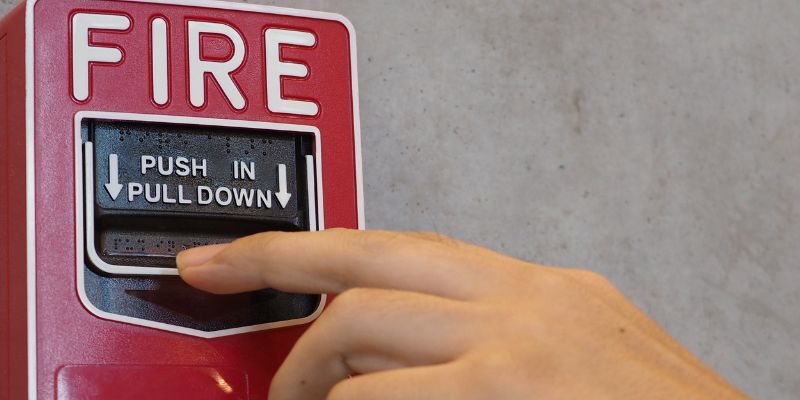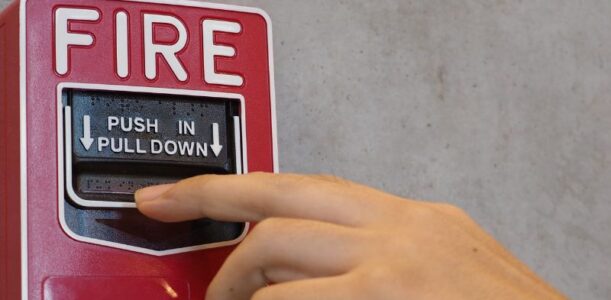An essential component of a commercial building’s comprehensive fire and life safety plan is a robust fire alarm system. There are a lot of uses for a fire alarm system, and it can be difficult to understand how they differ from one another. Understanding the individual functions of your fire alarm system can help you attain the highest level of protection for your occupants and help prevent loss of life.
Other systems, such as smoke control systems, automatic door closers, elevator recall, and so forth, can be programmed to operate in tandem with the fire alarm control unit. Typically, a control circuit and a relay are used by the fire alarm to do this.
Get A Quote

Relay
When power is provided to a relay rather than notification appliances, a control circuit is simply a notification appliance circuit (NAC). Relays are electromechanical switches that enable emergency control operations to be operated by the fire alarm control unit. The switch that controls the power entering the common terminal (C) will shift from the normally closed (NC) position to the normally open (NO) position when power from the fire alarm control panel energizes an electromagnet coil. Other systems can then be controlled by this switch.
Output Module
A fire alarm control unit’s control outputs can also be sent to an addressable output module via a signaling line circuit (SLC), allowing it to respond to data transmission from the SLC. This is advantageous since a single SLC can control several output modules, each of which can be controlled independently. For instance, all output modules in charge of a building’s door held open may be on the same SLC, but only certain doors may be closed according to the input received by the control unit. Only the control unit would be able to close all the doors if these modules were all connected to the same control circuit.
Elevator Recall/Shutdown
To initiate an elevator recall or shutdown, a signal must be sent from the fire alarm control unit to the elevator controller. When a smoke detector on any ground floor detects smoke, the fire alarm control unit will transmit a signal to the elevator on the designated level (usually street level). This will cause the elevator to be sent to an alternate level, typically the level above the designated level.
Smoke Control
Large open areas, like atriums and lobbies, are frequently used in building designs to connect different floors of a structure. A smoke control system might be required to keep smoke above people’s level as they evacuate the building in case of a fire, protecting them from harm due to smoke inhalation. These systems could consist of makeup air apertures and exhaust fans, all managed by an independent smoke control panel. When pull stations, smoke detectors, and water flow alarms within the protected space are activated, the fire alarm control unit is designed to send a signal to the smoke control panel to start the smoke removal process.
Automatic Door Closer
One of the main goals during a fire is to keep the fire and combustible products contained for as long as possible. This is partly achieved by using fire-resistant building materials. These fire-resistant barriers are typically located in shafts (including stairwells) and corridor walls of structures. Fire doors must be used to guard openings in the construction that are designed to withstand fire. These doors have automatic closers and must be closed to function properly but an electromagnet can also be used to keep them open. The fire alarm control unit will transmit a signal to the electro-magnets to cut off power, allowing the door to close in response to an alarm.
Input Output Matrix
The input/output matrix is a crucial component of the fire alarm system. A specific output signal is produced when an input is received by the fire alarm control unit. For example, if the ground floor smoke detector is triggered, the fire alarm control unit will activate specific NAC circuits and transmit a signal to the building’s elevator controller to send the elevator to an alternate level.
It is very important to have this system regularly maintained and tested to ensure it is consistently functioning properly.
High Rise Security Systems (HRSS) can assist you with all your commercial fire alarm system needs. We have been proudly serving the Chicagoland area for over 30 years and specialize in the custom design, installation, and monitoring of commercial fire and life safety systems that are code-compliant and meet your business’s unique specifications.
HRSS is an industry leader in commercial fire and life safety with experienced and knowledgeable NICET-certified technicians. We offer custom design, inspections, maintenance, repairs, and 24/7/365 monitoring services so you can have peace of mind that you are receiving the highest level of protection for your property. Contact us to verify that your emergency control functions are working properly and ensure your building has an added extra layer of protection.



